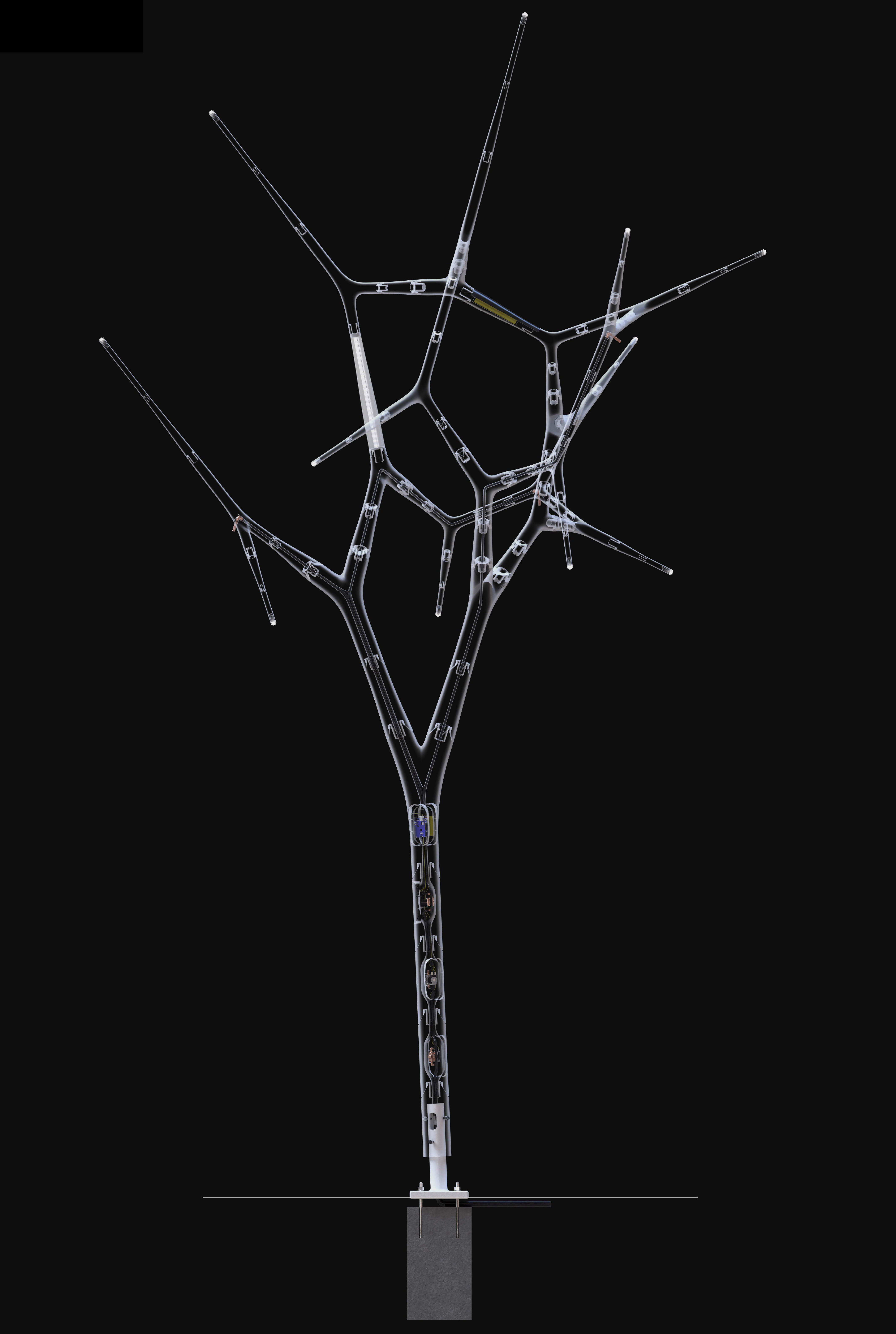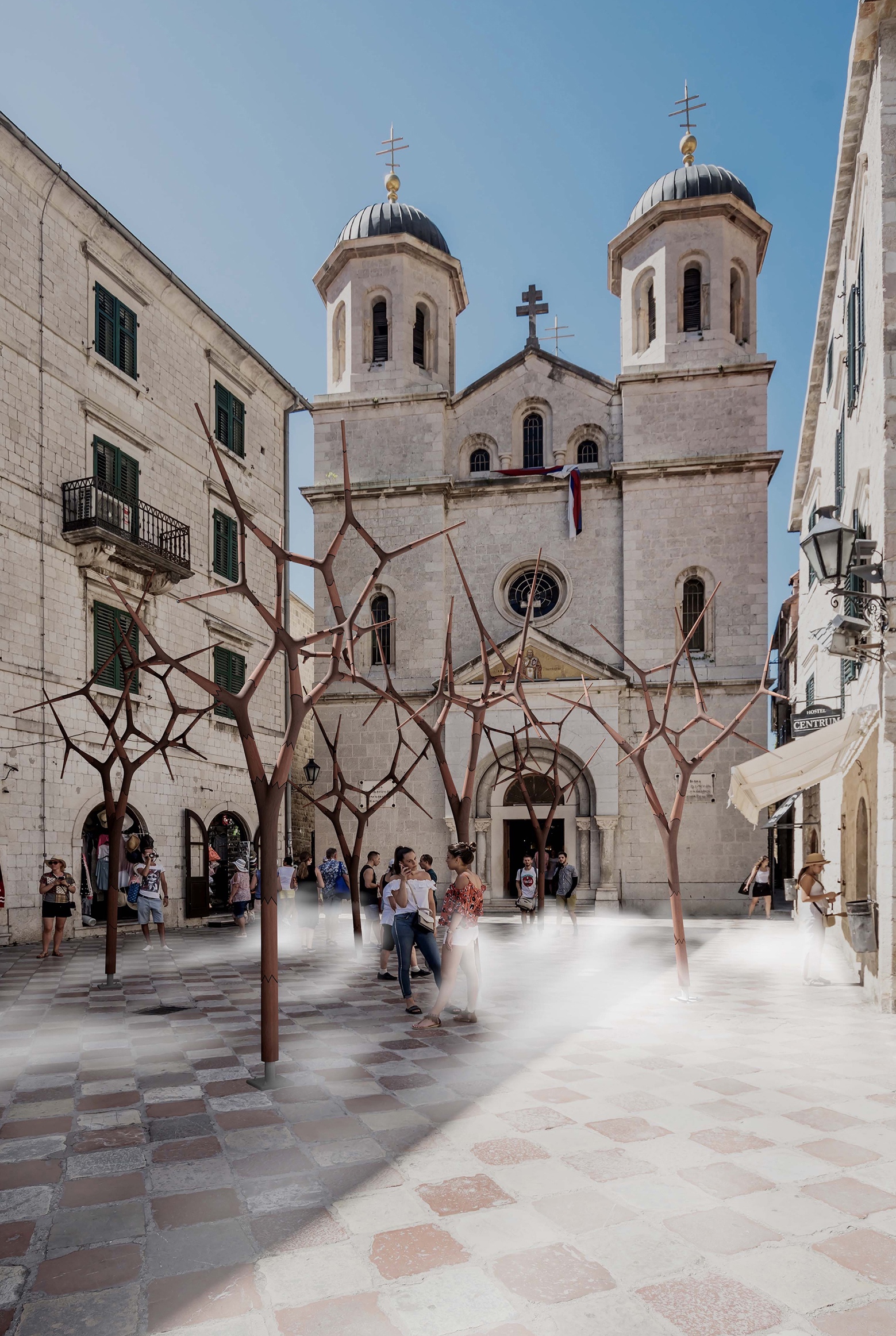An innovative and adaptive misting solution for outdoor cooling harnesses the interplay of technology and design, improving public amenity while taking a sculptural, tree-like form to enhance built environments.
The need
Around the world heat generated by urban structures and human activities is increasingly limiting use of outdoor built environments, and compromising people's health, well-being, and social interaction.
In response, researchers at the Melbourne School of Design, led by Dr Djordje Stojanovic from the Sustainable and Healthy Environments Lab (SHE Lab), in collaboration with Dr Milica Vujovic (TU Wien), and architectural designer Milan Katic have produced a new design for a misting system. Industry partner and misting systems manufacturer OZmist, based in Wangaratta (Victoria) supported the project.
The outcome
The device – known as 'MIST' – uses climate and occupancy data gathered from sensors built into a holding structure to control a fine water spray, creating a ‘context-aware’ evaporative cooling system for the outdoor urban environment.
A water pump, supply lines and spray nozzles deliver the mist, while mechatronic components include sensors capturing local climatic conditions, a microcontroller, and controllable valves to regulate water emission. This allows optimisation of the system's performance by synergising energy and water use with human traffic.

Created by a team led by Dr Djordje Stojanovic from the Faculty of Architecture, Building and Planning, the design was exhibited as 'MIST' at the 2023 Architecture Venice Biennale as part of the exhibition 'Mirages of the Future'. The exhibit involved computer generated images of what the installation might look like in various locations.
Developing the solution
“The application of sensing devices for information harvesting and computational techniques for information processing enables the misting system to balance humidity and temperature, so the fixture operates according to local climatic conditions, making it highly context-aware,” Dr Stojanovic explains.
In published research that preceded the MIST exhibit, the researchers outlined a predictive algorithm to enhance its performance based on responses to levels of human occupancy.
The fixture is designed to help control outdoor microclimates for humans, but can also reduce local heat accumulation in cities, and improve the amenity of public spaces.

Conceived as a modular tree-like shape composed of 'Y' and straight parts, it is adjustable to different city spaces, including streets, squares, and parks, and could be implemented in various physical contexts and scales.
It is 3D printed at 1:2 scale at Makers Space – a Digital Fabrication Lab of the Faculty of Architecture Building and Planning at the University of Melbourne.
Next steps
The team is currently in negotiations with industry partners to further develop the idea, and is looking for a location to conduct a test trial.
Publication
Stojanovic, Dj., Vujovic, M., Ding, Y. and Katic, M. 2023, Context-Aware Module for Evaporative Cooling in the Outdoor Built Environment. International Journal of Architectural Computing. 21(1) pp 100-119. doi.org/10.1177/14780771221095307
Images
Banner
Cropped computer generated image, 'Mist' Djordje Stojanovic, Milan Katic and Milica Vujovic, Design for outdoor microclimate control fixture at the 2023 Venice Biennale, part of the exhibition ‘Mirages of the Future', National Participations (Montenegro) Palazzo Malipiero, Campo San Samuele, Venice.
Story images
1) Diagram showing MIST structural elements
2) Uncropped banner image showing 'MIST' in a traditional setting.
First published on 21 June 2023.
Share this article